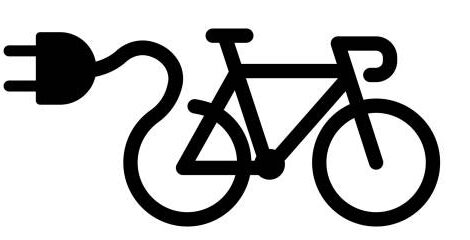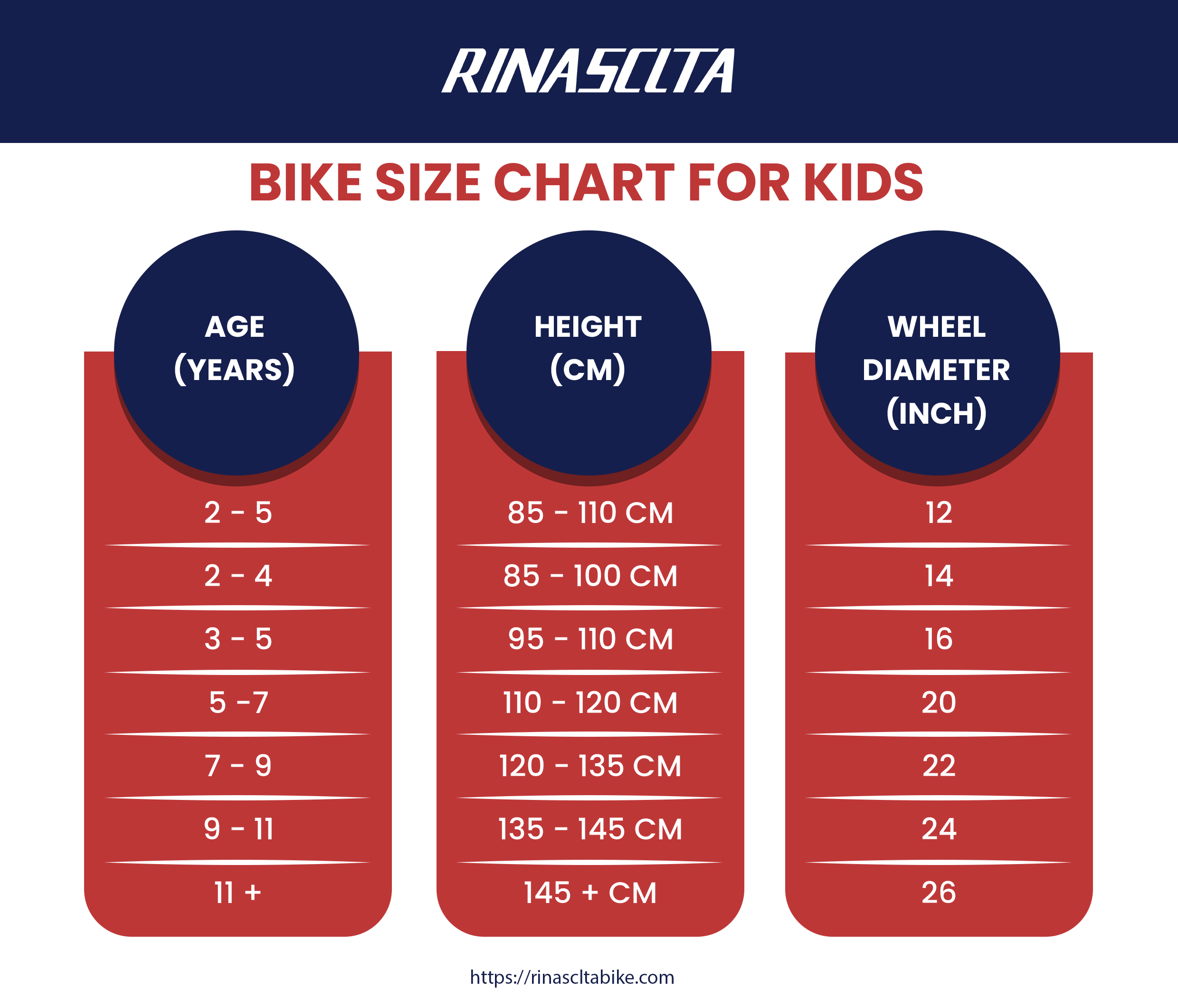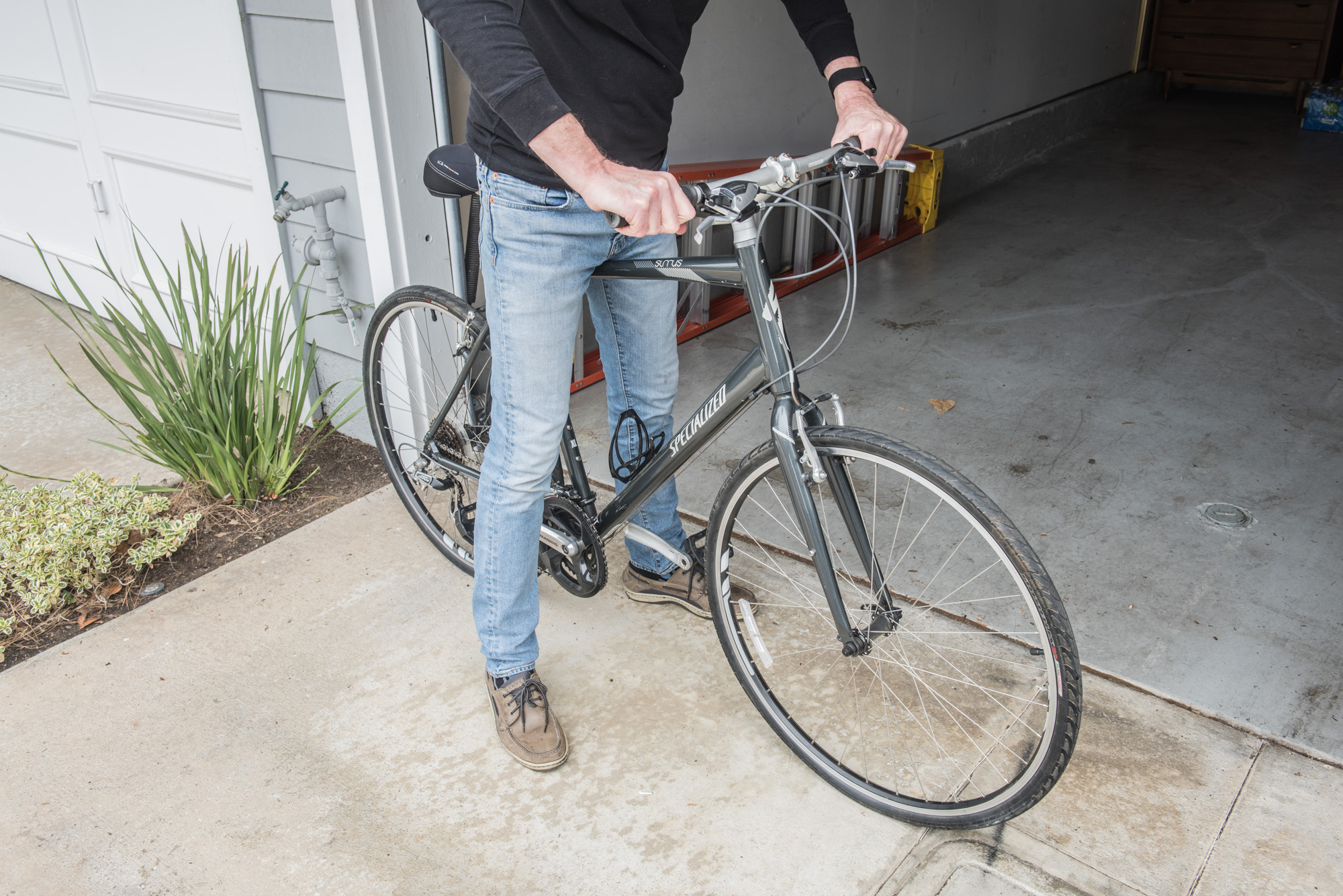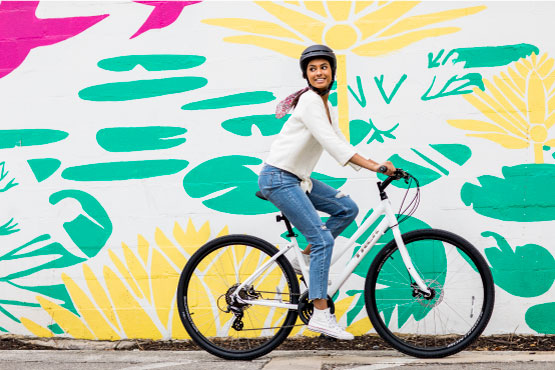How to Choose the Right Bike Size for Men
Finding the correct bike size for men is paramount for a comfortable, efficient, and injury-free riding experience. Proper bike fit ensures optimal power transfer, reduces strain on joints, and enhances overall enjoyment on the road or trail. Selecting the right bike size involves considering several interconnected factors, each playing a crucial role in achieving a harmonious connection between rider and machine. The goal is to find a bike size for men that feels like an extension of the body, allowing for seamless movement and control.
Ignoring proper bike fit can lead to discomfort, pain, and even chronic injuries. An ill-fitting bike can cause problems such as knee pain, backaches, and numbness in the hands and feet. Investing time and effort in finding the appropriate bike size for men is, therefore, an investment in your health and well-being as a cyclist. This guide will explore the key elements of bike sizing, offering insights into measurements, frame geometry, and the importance of professional guidance. Taking the time to understand these factors will empower you to make an informed decision and choose a bike size for men that perfectly suits your needs.
The journey to finding your ideal bike size for men begins with understanding the basic principles of bike fit. While height is often used as a starting point, it is crucial to consider other measurements such as inseam, arm length, and flexibility. These individual characteristics influence how you interact with the bike and determine the ideal frame size, seat height, and handlebar position. Furthermore, the type of riding you intend to do – whether it be road cycling, mountain biking, or commuting – will also influence the best bike size for men and its geometry. By considering these elements, you can narrow down your options and ultimately find a bike that delivers optimal performance and comfort. This guide offers a comprehensive overview of bike sizing, ensuring a confident and informed approach to choosing the perfect ride.
Understanding Key Measurements for Bicycle Sizing
Determining the correct bike size for men hinges on understanding essential body measurements. Height, inseam, and arm length are the primary factors that influence frame size, seat height, and handlebar reach. These measurements act as a compass, guiding you toward a bike that offers both comfort and efficient power transfer. Taking accurate measurements is the first step in finding your ideal ride.
Height is a general indicator, offering a preliminary range for bike size for men. However, relying solely on height can be misleading, as individuals with the same height may have different proportions. The inseam, measured from the crotch to the floor while standing with shoes off, provides a more precise indication of the appropriate frame size. This measurement directly correlates to the standover height of the bike, ensuring adequate clearance. Seat height is also heavily influenced by inseam length; an appropriate saddle height is crucial for efficient pedaling and preventing knee injuries. Arm length, measured from shoulder to wrist, helps determine the optimal handlebar reach. Too short or too long of a reach can lead to discomfort and strain on the back, shoulders, and wrists. A proper reach allows for a comfortable and controlled riding position, enhancing overall enjoyment and bike handling.
Each of these measurements plays a vital role in achieving a balanced and comfortable riding posture. When selecting a bike size for men, consider how these measurements interplay. Frame size is directly affected by your height and inseam, and determines the overall geometry of the bike. Seat height, adjusted based on inseam, ensures proper leg extension during the pedal stroke. Handlebar reach, influenced by arm length, dictates your upper body position and control. Ignoring these measurements can lead to a less-than-ideal bike fit, resulting in discomfort, reduced efficiency, and potential injuries. Utilizing these core measurements will help guide your bike selection and ensure a more enjoyable riding experience.
Decoding Bike Frame Geometry and Its Impact on Fit
Bike frame geometry plays a crucial role in determining the overall feel and handling of a bicycle, significantly impacting the bike size for men. Understanding key terms is essential for making informed decisions. Top tube length, head tube angle, and stack and reach are vital measurements to consider when selecting a bike. The top tube length influences the rider’s reach to the handlebars. A longer top tube typically results in a more stretched-out riding position, favored by cyclists seeking aerodynamic efficiency. Conversely, a shorter top tube allows for a more upright and comfortable posture, often preferred for recreational riding.
Head tube angle affects the bike’s steering responsiveness and stability. A steeper head tube angle makes the bike more agile and quicker to turn. A slacker angle increases stability, making the bike feel more planted, especially at higher speeds. Stack and reach are two measurements that define the vertical and horizontal distance from the bottom bracket to the top of the head tube. Stack indicates the height of the front end, while reach indicates its horizontal distance. Riders can use these measurements to compare the fit of different bike frames, irrespective of frame size designations. Visual aids, such as diagrams illustrating these geometrical relationships, can be invaluable in understanding how these measurements affect rider posture and overall comfort. The right bike size for men considers these factors.
Different frame geometries cater to various riding styles and preferences. For example, a road bike typically features a longer top tube, a steeper head tube angle, and a lower stack to facilitate an aggressive and aerodynamic riding position. A mountain bike, on the other hand, usually has a shorter top tube, a slacker head tube angle, and a higher stack to enhance control and stability on challenging terrain. Hybrid and commuter bikes often prioritize comfort and practicality, featuring a more upright geometry with a shorter reach and a higher stack. Ultimately, the ideal frame geometry depends on the rider’s individual needs, flexibility, and riding goals. Paying attention to these geometric details will contribute to a more comfortable and efficient riding experience and selecting the correct bike size for men.
Sizing Charts: Navigating the Options by Height and Inseam
Bike sizing charts serve as a useful starting point in determining the appropriate bike size for men. These charts typically correlate a rider’s height and inseam measurements to suggested frame sizes. It’s crucial to understand how to effectively use these charts to narrow down your options and to find the correct bike size for men.
Height-based charts are the most common. They provide a general frame size recommendation based solely on your overall height. Inseam measurements offer a more precise approach. Inseam refers to the distance from your crotch to the floor while standing with your back against a wall. This measurement directly relates to the standover height of the bike, ensuring you can comfortably straddle the top tube with adequate clearance. To use these charts effectively, locate your height and inseam on the chart to identify the corresponding frame size range. Remember that bike manufacturers use different sizing conventions (e.g., small, medium, large, or numerical sizes in centimeters or inches). Always refer to the specific manufacturer’s sizing chart for the bike you’re interested in. This will help to find the correct bike size for men.
While sizing charts offer a convenient starting point, they shouldn’t be the sole determinant of your bike size for men. These charts provide generalized recommendations that may not account for individual body proportions, flexibility, or riding style. For instance, someone with longer legs and a shorter torso might prefer a different frame size than someone with the opposite proportions, even if they have the same overall height. Sizing charts also don’t address crucial aspects of bike fit like handlebar reach and saddle height. Always consider these individual factors and use the sizing chart as a guide, not a strict rule. Moreover, women’s sizing charts exists, and should not be considered when assessing bike size for men. Ultimately, a test ride and, ideally, a professional bike fit are necessary to fine-tune your position and ensure optimal comfort and performance.
Different Bike Types, Different Fit Considerations
Bike size for men isn’t a universal concept; it shifts based on the specific bicycle type. A road bike, designed for speed and efficiency on paved surfaces, demands a different fit compared to a mountain bike, built for rugged trails. Hybrid bikes, blending features of both, require yet another set of considerations. Even within these categories, sub-types like endurance road bikes or cross-country mountain bikes will influence the ideal fit.
Road bikes often prioritize an aggressive, aerodynamic posture. This usually translates to a longer reach and a lower handlebar position. The goal is to maximize power transfer and minimize wind resistance. Finding the correct bike size for men on a road bike means achieving a balance between an efficient riding position and sustained comfort. Mountain bikes, conversely, emphasize control and maneuverability. A more upright posture is common, allowing for better visibility and responsiveness on challenging terrain. Frame sizes tend to be smaller than road bikes for a given rider height, contributing to increased agility. Suspension also plays a role, as it affects the effective seat height and overall geometry of the bike. Hybrid and commuter bikes typically offer a more relaxed riding position, focusing on comfort and practicality for everyday use. These bikes often feature a shorter reach and higher handlebars. When selecting a bike size for men in this category, prioritize a comfortable upright posture that allows for easy visibility and control in urban environments.
Consider the nuances within each bike type. For instance, an endurance road bike will have a slightly more relaxed geometry compared to a racing road bike. Similarly, a full-suspension mountain bike will fit differently from a hardtail. Always test ride various models and consult with a professional fitter to fine-tune your position. They can help determine the ideal frame size and component adjustments to optimize your comfort and performance, taking into account the intended use of the bicycle. Remember that the optimal bike size for men is not just about height and inseam; it’s about achieving a harmonious relationship between your body and the bike, tailored to the specific demands of your chosen riding style.
The Importance of Test Rides and Professional Fitting Services
To truly determine the ideal bike size for men, nothing replaces the experience of test riding different models. Sizing charts offer a helpful starting point, but they cannot account for individual variations in body proportion and riding style. Visiting a local bike shop allows you to straddle various bikes, feel their handling, and assess your comfort level. Reputable shops will encourage test rides, allowing you to experience the bike in a real-world setting before making a purchase. This hands-on approach is invaluable in confirming that the chosen bike size for men feels right. Test rides help validate sizing chart recommendations. They also reveal subtle nuances in frame geometry that impact comfort and performance. Experiencing different bikes firsthand will improve decision-making.
For those seeking a more precise and personalized fit, professional bike fitting services are highly recommended. A qualified bike fitter possesses the expertise to analyze your riding posture, biomechanics, and flexibility. They use specialized tools and techniques to fine-tune your bike’s setup to match your unique needs. During a bike fitting session, the fitter will assess your current bike (if applicable) or help you select the appropriate bike size for men. They will then adjust components such as saddle height, handlebar position, stem length, and cleat placement (for clipless pedals). These adjustments aim to optimize your comfort, efficiency, and power output. Expect a professional fitting to last between one and three hours, involving a combination of static measurements and dynamic assessments while you pedal on a trainer. The investment in a professional bike fit can significantly enhance your riding experience, reduce the risk of injuries, and help you achieve your cycling goals.
The benefits of a customized fit extend beyond mere comfort. A properly fitted bike promotes efficient pedaling, reduces muscle fatigue, and minimizes the risk of overuse injuries. Cyclists often experience improvements in power output and endurance after undergoing a professional bike fit. While finding the correct bike size for men is essential, the subsequent fine-tuning through professional fitting optimizes the bike to the rider. This synergy allows for a more enjoyable and sustainable cycling experience. Don’t underestimate the value of expert guidance when selecting and setting up your bicycle. Consider it an investment in your long-term cycling health and enjoyment.
Common Bike Fit Issues and How to Address Them
Many men encounter bike fit problems that can diminish the joy of cycling. Addressing these issues promptly can enhance comfort and prevent long-term discomfort or injury. A common problem is saddle discomfort, often manifesting as soreness or chafing. This can frequently be resolved by experimenting with different saddle types, adjusting saddle height, or ensuring the saddle is level. Men searching for the correct bike size for men should also consider a saddle with a pressure relief channel.
Back pain is another frequent complaint. It often arises from an improper reach to the handlebars, forcing the rider to overextend. Adjusting handlebar height, stem length, or stem angle can alleviate this. Ensuring the bike size for men aligns with the rider’s torso length is also crucial. Core strengthening exercises can contribute to improved posture and reduced back strain. Knee pain is also a common issue. It frequently results from incorrect saddle height or cleat positioning (for clipless pedal systems). If the saddle is too low, it can cause pain in the front of the knee. Too high, and pain may develop behind the knee. Fine-tuning the saddle height in small increments can make a significant difference. Also, proper bike size for men helps to prevent knee injuries.
Hand numbness or tingling, often affecting the ulnar nerve, can stem from excessive pressure on the hands. This may happen because the rider is too stretched out or leaning too heavily on the handlebars. Wearing padded cycling gloves can offer relief. Adjusting handlebar angle or using grips with better cushioning can also help. Ensuring the bike size for men appropriately distributes weight can reduce pressure on the hands. Consider also that many cyclists experience neck pain. This is usually due to the handlebar being too low, forcing the rider to hyperextend their neck. Raising the handlebars or using a stem with a steeper angle can alleviate neck strain. Professional bike fitters can offer personalized solutions to these and other bike fit challenges, ensuring a more comfortable and efficient riding experience for men seeking the ideal bike size for men. Remember to make small adjustments and assess their impact before making further changes.
Beyond the Numbers: Finding a Bicycle That Feels Right
Determining the appropriate bike size for men extends beyond mere measurements and sizing charts. While these tools offer a valuable starting point, the ultimate decision hinges on subjective comfort and personal preference. The goal is to discover a bicycle that feels like a natural extension of the body, promoting an enjoyable and efficient riding experience. Remember that finding the ideal bike size for men is a journey, not a destination.
Consider the overall feel of the bike. Does the riding position feel strained or relaxed? Are the hands, wrists, and back comfortable during extended periods of riding? Experiment with different handlebar positions, saddle heights, and stem lengths to fine-tune the fit. It’s crucial to prioritize these subjective factors alongside objective measurements. Finding the perfect bike size for men involves balancing data with individual needs. A bike that aligns with personal preferences is more likely to be ridden and enjoyed.
Ultimately, the best bike size for men is the one that inspires confidence and enthusiasm. A properly fitted bike empowers riders to explore new routes, conquer challenging terrains, and embrace the joy of cycling. So, trust your instincts, listen to your body, and prioritize comfort above all else. The perfect bike size for men is not just a number; it’s a feeling of harmony between rider and machine, unlocking countless adventures on two wheels. Remember that test rides and professional fittings are invaluable resources in this pursuit, but your personal experience is the ultimate guide to finding the perfect bike size for men.




